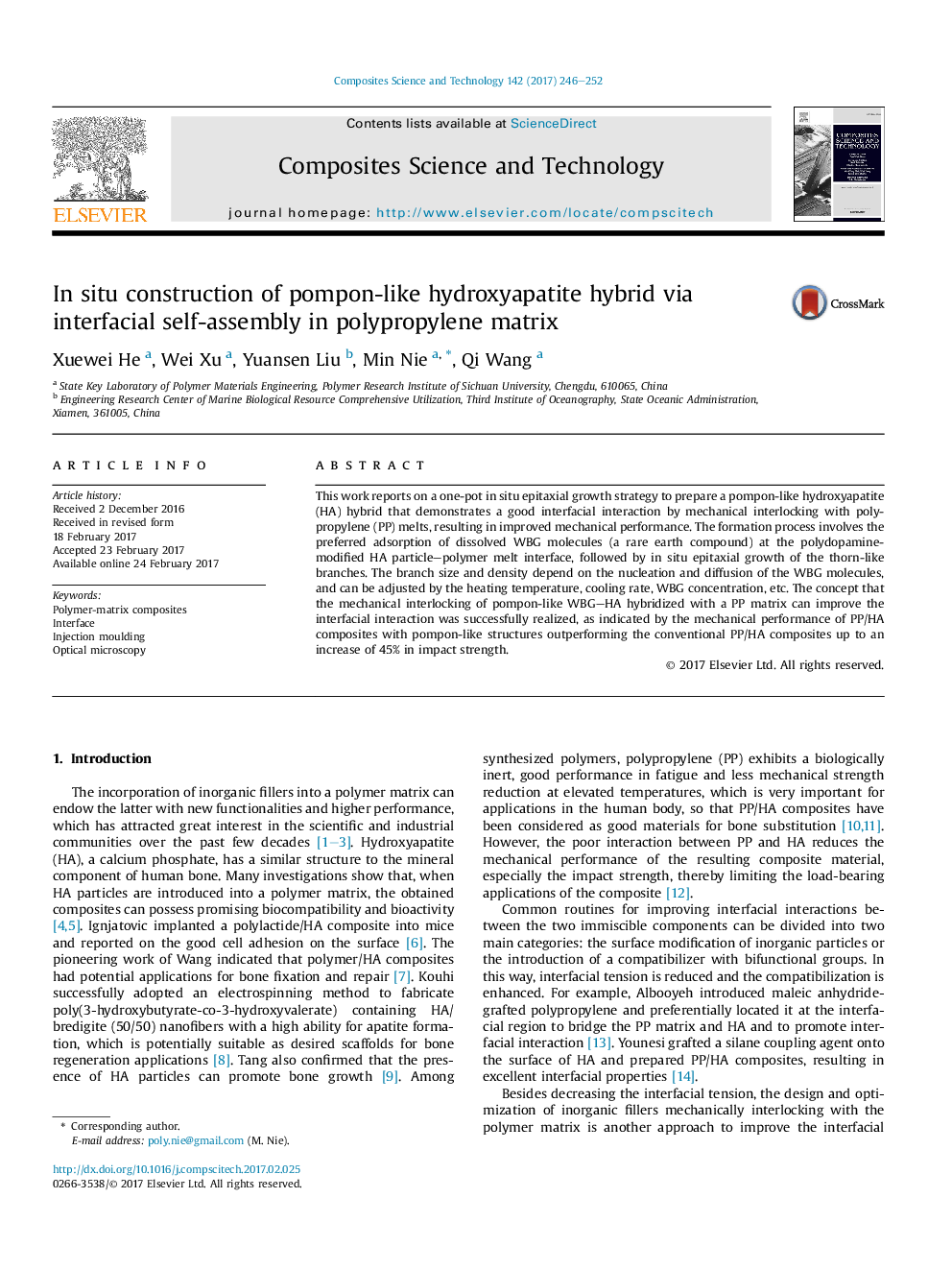| Article ID | Journal | Published Year | Pages | File Type |
|---|---|---|---|---|
| 5022240 | Composites Science and Technology | 2017 | 7 Pages |
Abstract
This work reports on a one-pot in situ epitaxial growth strategy to prepare a pompon-like hydroxyapatite (HA) hybrid that demonstrates a good interfacial interaction by mechanical interlocking with polypropylene (PP) melts, resulting in improved mechanical performance. The formation process involves the preferred adsorption of dissolved WBG molecules (a rare earth compound) at the polydopamine-modified HA particle-polymer melt interface, followed by in situ epitaxial growth of the thorn-like branches. The branch size and density depend on the nucleation and diffusion of the WBG molecules, and can be adjusted by the heating temperature, cooling rate, WBG concentration, etc. The concept that the mechanical interlocking of pompon-like WBG-HA hybridized with a PP matrix can improve the interfacial interaction was successfully realized, as indicated by the mechanical performance of PP/HA composites with pompon-like structures outperforming the conventional PP/HA composites up to an increase of 45% in impact strength.
Related Topics
Physical Sciences and Engineering
Engineering
Engineering (General)
Authors
Xuewei He, Wei Xu, Yuansen Liu, Min Nie, Qi Wang,
